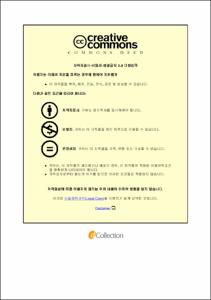단순가공 수산물 제조 공정 중 황색포도상구균 저감화를 위한 현장 적용 방안
- Alternative Title
- Field Application for Reduction of Staphylococcus aureus in Simple Processed Fishery Products
- Abstract
- There are high chances of cross-contamination by workers due to the manual processing process in simple processed fishery products. As a result of poor safety management among workers, these processed fishery products are likely to get contaminated by foodborne pathogenic bacteria such as Staphylococcus aureus. In addition, the frequency of S. aureus detection in simple processed fishery products is high due to the analysis of samples and final products. The source of S. aureus contamination is mainly from its parasitism on the workers’ skin. In the present study, we collected simple processed marine products which are processed by workers at different time intervals and these products were also analyzed in order to check the S. aureus contamination. For this study, three shellfish processing plants include salted chub mackerel, frozen oysters, and shucked oyster, which are produced manually by most of the workers at different times such as 6 hours, 8 hours, and at the end of work. Total 103 samples were collected for the analysis of different microbiological hazards such as anaerobic bacterial count, coliform group, E. coli, S. aureus, Salmonella sp. and Listeria monocytogenes. The result showed that in salted chub mackerel-processing factory where worker changed their gloves every 2 hours, no hygienic indicator bacteria and pathogenic microorganisms were detected in all samples. In frozen oyster processing factory where the gloves were sterilized every 30 minutes, only S. aureus was detected. However, most of the samples were found to have high bacterial counts in the case of shucked oyster contained in poultry kidneys, which not reused and periodically replaced with new gloves. Therefore, considering the case of salted chub mackerel and frozen oysters, it is necessary to reinforce the workers hygiene safety management such as disinfection and replacement of gloves periodically in order to reduce the contamination of foodborne bacteria such as S. aureus.
- Issued Date
- 2019
- Awarded Date
- 2019. 2
- Type
- Dissertation
- Publisher
- 부경대학교
- Alternative Author(s)
- Min-chul Jeong
- Affiliation
- 부경대학교 대학원
- Department
- 대학원 식품공학과
- Advisor
- 김영목
- Table Of Contents
- 목 차
목 차 i
Abstract iv
Ⅰ. 서 론 1
Ⅱ. 재료 및 방법 4
1 실험 재료 4
1.1 가공업체 및 검체 4
1.2 가공 공정 분석 5
1.3 작업자의 위생상태 분석 5
1.4 배지 8
2 실험 방법 9
2.1 공정별 시료 채취 9
2.2 일반세균수, 대장균군 및 대장균 분석 10
2.3 병원성 미생물 분석 11
2.4 저감화 실험 방법 13
2.4.1 항균 비누 및 NaClO 처리 13
2.4.2 항균 비누 및 NaClO 세척 시료 분석 13
2.5 통계 분석 13
Ⅲ. 결과 및 고찰 15
1 어류 및 패류 가공 공정 중의 작업시간 경과에 따른 미생물학적 위해 요소 분석 15
1.1 염장 고등어 가공 공정 중의 작업시간 경과에 따른 미생물 오염도 분석 15
1.2 냉동 굴 가공 공정 중의 작업시간 경과에 따른 미생물 오염도 분석 18
1.3 생굴 박신장 가공 공정 중의 작업시간 경과에 따른 미생물 오염도 분석 20
2 어류 및 패류 가공 공정 중의 작업 시간 경과에 따른 병원성 미생물 분석 23
2.1 염장 고등어 가공 공정 중의 작업 시간 경과에 따른 병원성 미생물 분석 23
2.2 냉동 굴 가공 공정 중의 작업 시간 경과에 따른 병원성 미생물 분석 26
2.3 생굴 박신장 가공 공정 중의 작업 시간 경과에 따른 병원성 미생물 분석 28
3 어류 및 패류 가공 공정 중의 작업 시간 경과에 따른 작업자 장갑 미생물학적 위해 요소 분석 30
3.1 염장 고등어 가공 공정 중의 작업 시간 경과에 따른 작업자 장갑 미생물학적 위해 요소 분석 30
3.2 냉동 굴 가공 공정 중의 작업 시간 경과에 따른 작업자 장갑 미생물학적 위해 요소 분석 32
3.3 생굴 박신장 가공 공정 중의 작업 시간 경과에 따른 작업자 장갑 미생물학적 위해 요소 분석 35
4 생굴 박신장 작업자 장갑의 항균 비누와 NaClO 세척 전과 후의 미생물학적 위해 요소 분석 38
Ⅳ. 요 약 41
Ⅴ. 참고문헌 43
- Degree
- Master
- Files in This Item:
-
-
Download
 단순가공 수산물 제조 공정 중 황색포도상구균 저감화를 위한 현장 적용 방안.pdf
기타 데이터 / 509.57 kB / Adobe PDF
단순가공 수산물 제조 공정 중 황색포도상구균 저감화를 위한 현장 적용 방안.pdf
기타 데이터 / 509.57 kB / Adobe PDF
-
Items in Repository are protected by copyright, with all rights reserved, unless otherwise indicated.